From Uyuni I headed 5 hours west to Potosí. Potosí's history is extremely interesting to me. A llama herder named Diego Huallpa discovered silver in
Cerro Rico (Rich Hill) in 1544, when he lit a fire for warmth, which glowed strangely.
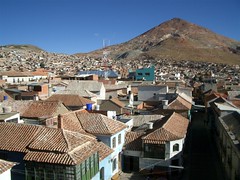
Cerro Rico, overlooking Potosí
Soon after the city was founded and mining commenced, using black slaves brought in from Africa, or imprisoned Indians. By the 17th century it was one of the largest and richest cities in the world, 200,000 inhabitants, 86 churches and 800 professional gamblers. A duel between
caballeros (gentlemen) would be fought with gold encrusted swords and shields. I read an interesting book on the history of Potosi and one of the quotes from the time was something like:
The fires that feed the smelters are constantly in need of fuel. But because of the altitude kindling is scarce, so they burn almost anything, even animal dung. Thus there is a living to be made collecting pieces of llama dung from the streets. Even the excrement of humans can be used for such a purpose, so the Indians go to a certain place and leave their waste to dry, waste which is later sold for 8 reales.
Conditions were dire, hours were long, and over 8 million slaves died during the mine's peak years.
By the 19th century the silver was exhausted, but the mine continued thanks to its tin, lead, and zinc reserves. After the Bolivian revolution the people were proclaimed the owners of the mine, so now each miner owns a part of it and it's worked as a co-operative. But it's still a terrible life, most miners die of silicosis of the lungs 10 years after entering the mines. Tourists can do a tour of the mines, but I was a bit reluctant as I'm slightly claustrophobic (and sometimes asthmatic), and I'd heard it gets hard to breathe down there, what with the altitude, dust, and poisonous gases. Even the pamphlet selling the tour says "not for wimps or woosies". But in the end curiosity got the better of me, so I signed up.
First off we visited the miner's market, to buy gifts to give to the miners we'd meet on the tour. The miners don't eat anything in the mine as the environment is too toxic so they'd poison themselves, but soft drinks, alcohol (96%!!), coca leaves (to chew for energy), and dynamite are welcome gifts.
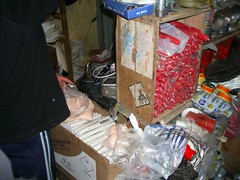
Sticks of dynamite for sale in the miner's market
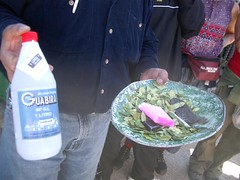
Miner fuel: 96% alcohol and coca leaves
I purchased a dynamite kit consisting of a stick of dynamite, detonater, fuse and ammonium nitrate (for added kick), for only 10Bs (US$1.10). Ammonium nitrate is the active ingredient in fertiliser, which is why so many homemade terrorist bombs are made using fertiliser.
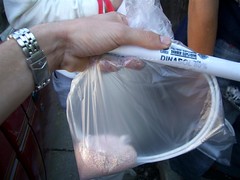
My little terrorist - my dynamite kit
Next we went to get suited up, we were given overalls, gumboots, hardhats and headlamps. I'd heard it gets unbearably hot on the tour so I stripped off, wearing only my boxers under my overalls, which proved to be a good idea. I'd also heard it's hard to breathe so we all bought dust masks in the miner's market as well, which proved to be worth their weight in silver for me. Later we'd pass other tour groups without the dust masks, I don't know why they didn't have them, but the masks made it a lot easier to breathe.
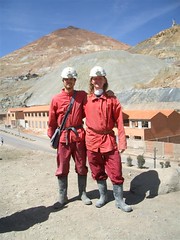
Kitted out with John, in front of Cerro Rico
As we learnt on the tour, the miners start out as a second assistant, move up to first assistant, then after 7 years are given membership of the mine meaning they'll have their own claim. If the claim has any value they can hire their own assistants to help them work it. The minimum wage in Bolivia is 600Bs (US$75) a month, a miner could earn around 1500Bs (US$190). Hardly worth poisoning yourself for. Today around 10,000 miners work the mine. Usually they work 8 hours a day but the miners we met on the tour said they'd started work at 6am that day and would work until 9pm - a 15 hour shift. Second assistants have the shit jobs like removing the trolley-loads of rocks along the rickety rail tracks. Trolleys weigh over 2700kg and it takes four of them to remove it, sweating all the way. Unfortunately our tour was on a Monday and we didn't get to see that happening. The mining is done using dynamite, but to place a stick in the rock they first need to carve a 15 cm deep hole - using a pick and a hammer this takes about 2 hours - using a jackhammer 15 can be done an hour, and can be placed a meter deep for more effect instead of the 15 cms. If the miner is fortunate enough to have found a rich vein he could afford to install air pumps and hoses for the jackhammers, but the majority don't so they still work place the dynamite using hammers and picks.
Although it's all in the one mountain,
Cerro Rico, there are a number of mines. We toured the sections of the Rosario mine. We started out following the entrance tunnel which was reasonably tall, but we had to duck a little for some sections.
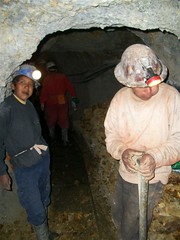
The first miners we met. Note cheeks full of coca leaves
The good times didn't last though, we were soon crawling and scrambling our way to get to other tunnels or to other areas where the miners were working. However, finding a miner proved to be as difficult as finding a silver vein. Although the tours run on a Sunday, no miners work, so we'd all waited until Monday to do ours. However, the day before they'd been a big miner party, so many miners were still hungover and hadn't come to work today. The second guy we came across was up a narrow shaft ten metres or so, all by himself, chipping away with hammer and chisel to place his dynamite. We had to go through one at a time as it was a dead-end, and I gave him my dynamite kit.
We also passed an important figure in the mines - a statue of the devil. As Catholics, the bible says that God lives in the sky and the Devil lives in the ground, so at every level there's a shrine to the devil, which the miners give gifts and make live llama sacrifices for. They give the Devil gifts so that he doesn't take any of them, since they're in his territory. This also coincides with the traditional Incan earth god of Pachamama, to whom they also make sacrifices. Our Devil had a dried llama foetus sitting between his feet, as well as a decent covering of coca leaves, and burnt out cigarettes.
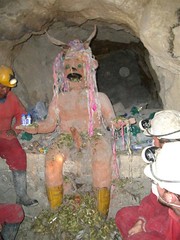
One of the many Devil shrines. Erection = fertility
Another hour of hunched over walking, followed by a bit of crawling and some ladder work, and we met another group of miners. The member in charge of them we spoke to at length, he'd been working in the mines 30 years - since he was 8 years old. The guy was tiny, he'd lucky to be 50kg dripping wet. He'd started working the mine as an orphan, and now he had 10 kids to feed which I guess is why he's still doing it.
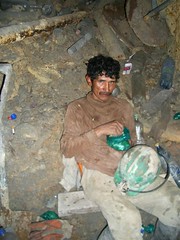
30 years in the mine and counting
We gave him a bag of coca leaves as well as some soft drink and dynamite. It's because of these gifts that the miners are happy to waste a bit of their time talking with us.
After about another hour of scrambling we were finally out in the open again, blinking in the bright sunlight. In all we'd been in the ground 3 hours, which was plenty, but only a fraction of a miner's working day. I'd proved myself well enough, the tour wasn't as tough as I thought it would be as the really tight spaces we went through only lasted a couple of metres before they'd widen again to give a bit of breathing room. The cheap dust masks helped too.
With our final stick of dynamite our guide gave us a demonstration blast.
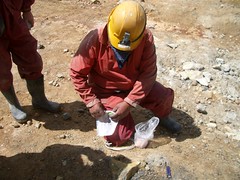
Our guide prepares the dynamite
He shortened the fuse plenty but it still took over a minute to go off, by which time we'd all thought it had gone out... BOOM!
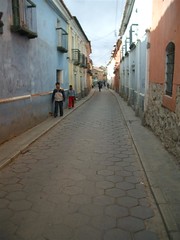
Colonial style narrow streets
In all I spent 3 days in Potosi but I could have spent a few more, I really liked it there. I've now gone from being anti- to pro- tour guides, so I got a tour from a local guy about my age. Now that I'm backpacking I'm mostly speaking English with other gringos so getting a tour is one way for me to speak and listen to Spanish for an hour or two. He took me around the city, pointing out the colonial style streets, the many churches, as well as taking me around what used to be the Indigenous quarter in the colonial days.
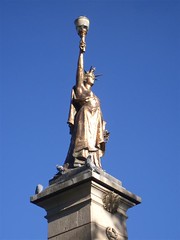
Potosi's Statue of Liberty. Tits out represents freedom of thought
Another day a group of us from the hostel went to the nearby Hot Springs at Tarapaya, 22km away. As well as crowded swimming pools, nearby is a 500 year old swimming pool, dug by the Incas, with a thermal vent in the centre keeping it a pleasant 35 degrees or so. They did a great job digging it out, as I couldn't see nor touch the bottom at any point. We spent a great afternoon lazing on the grass poolside, and for a laugh covered ourselves with the mud from the banks which the locals told us is good for your skin. A camera crew with 2 hot girls for presenters came over and interviewed us, evidentally for some tourism TV show. After a bit of on camera flirting one of them invited me to go with them to Uyuni, but well I'd just spent 5 days awaiting my keys there and didn't feel like returning.
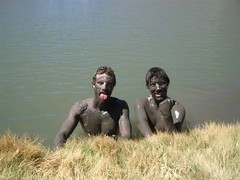
Maori-ing it up with the thermal mud
The final place I visited in Potosí was La Casa de la Moneda, or the Mint. This historic building was used to mint silver from the mines into either ingots or coins, to be sent back to Spain. The tour was OK.











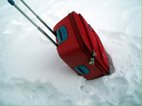
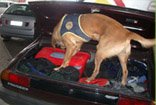

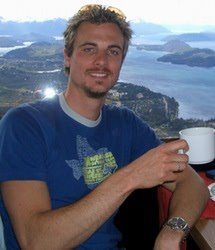


0 Comments:
Post a Comment
<< Home